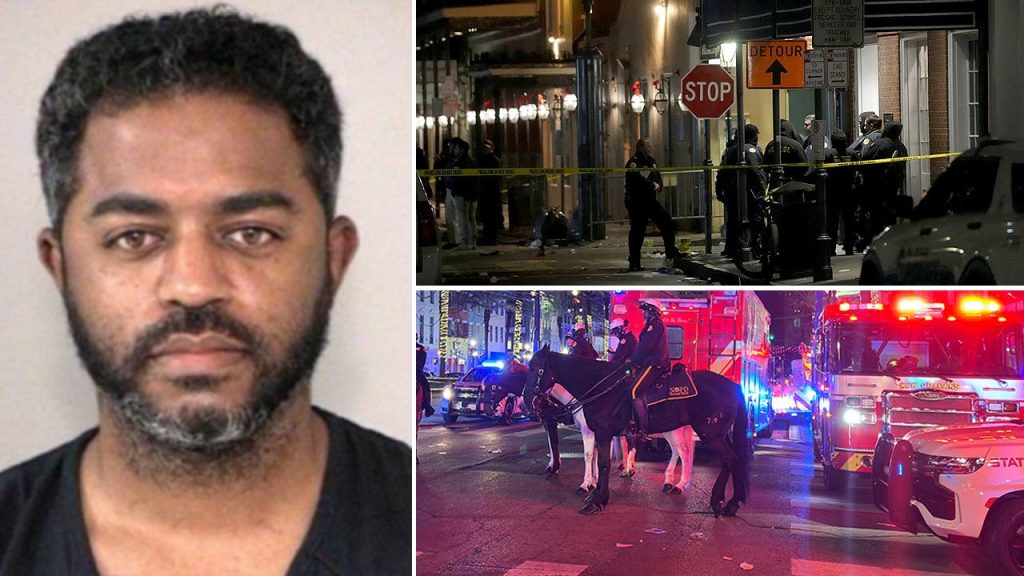The alarming trend of extremism within the ranks of former and current U.S. military personnel came into sharp focus with two suspected terrorist attacks on New Year’s Day 2024. In New Orleans, a former Army staff sergeant with a deployment to Afghanistan allegedly drove a vehicle into a crowd on Bourbon Street, resulting in 14 fatalities. Hours later, in Las Vegas, an explosion outside the Trump hotel, attributed to an active-duty Green Beret, claimed the life of the suspected perpetrator. These incidents underscore a disturbing reality: individuals trained in combat and entrusted with sensitive information are susceptible to radicalization, posing a significant threat to national security. The potential consequences are dire, considering the access these individuals have to advanced weaponry and tactical expertise. The Department of Defense has yet to publicly address its strategies for identifying and mitigating this growing threat within its ranks.
Statistical data paints a grim picture of the scope of this issue. A study by the National Consortium for the Study of Terrorism and Responses to Terrorism revealed that between 1990 and 2022, individuals with military backgrounds were involved in plotting a disproportionately high number of mass-casualty terrorist attacks within the United States. Their involvement accounted for 25% of all planned extremist attacks during this period, totaling 144 separate plots by 170 individuals. This alarming statistic underscores the urgency of addressing the underlying causes of radicalization within the military and implementing effective preventative measures. The potential for individuals with military training and experience to engage in extremist violence presents a significant challenge to national security.
The New Year’s Day incidents are not isolated occurrences. A series of cases throughout the 21st century highlight the persistent danger of military-linked extremism. In 2009, Army Major Nidal Hassan, an Islamic extremist, carried out the deadliest mass shooting on a U.S. military base, killing 13 people at Fort Hood. Hassan’s radical views, expressed openly prior to the attack, raise concerns about the effectiveness of existing screening and intervention programs within the military. Similarly, the 2021 case of Army Private Cole James Bridges, who conspired to provide intelligence to ISIS and plot an attack on the 9/11 memorial, demonstrates the allure of extremist ideologies for some service members.
The spectrum of extremist beliefs attracting military personnel extends beyond religious extremism. In 2020, Army Private Ethan Melzer was sentenced to 45 years for sharing sensitive military information with a neo-Nazi group, aiming to facilitate an attack on his own unit. This case exemplifies the insidious nature of white supremacist and extremist ideologies within the military. The 2014 Kansas City Jewish Community Center shooting, perpetrated by Vietnam War veteran and former Green Beret Frazier Glenn Miller, further illustrates the danger posed by individuals with military training embracing extremist ideologies. Miller’s long history of white supremacist activities and prior convictions for weapons offenses raises questions about the adequacy of background checks and ongoing monitoring of veterans.
The diverse motivations driving these acts of extremism highlight the complex challenge facing authorities. The 2014 hatchet attack in Queens by Navy veteran Zale Thompson, a recent Muslim convert, showcases the potential for radicalization through online platforms. The 2016 Dallas police ambush by Afghanistan War veteran Micah Xavier Johnson, motivated by anger over police brutality against Black men, demonstrates how social and political grievances can intersect with extremist tendencies. The 2020 arrest of three veterans, self-identified “Boogaloo Bois,” for plotting to bomb a federal building during George Floyd protests, further underscores the diverse range of extremist ideologies attracting individuals with military backgrounds.
The significant number of veterans and active-duty military personnel involved in the January 6th Capitol riot, estimated at 230 out of 480 individuals with military backgrounds accused of extremist crimes between 2017 and 2023, further amplifies the urgency of addressing this national security threat. The prevalence of extremist ideologies within the military and veteran communities necessitates a comprehensive approach that includes enhanced screening procedures, improved mental health support, and ongoing monitoring of individuals identified as at risk of radicalization. The challenge lies in balancing the need to protect national security with respecting the rights and freedoms of service members and veterans. The development and implementation of effective strategies to counter extremism within the military are crucial to safeguarding both national security and the integrity of the armed forces.

